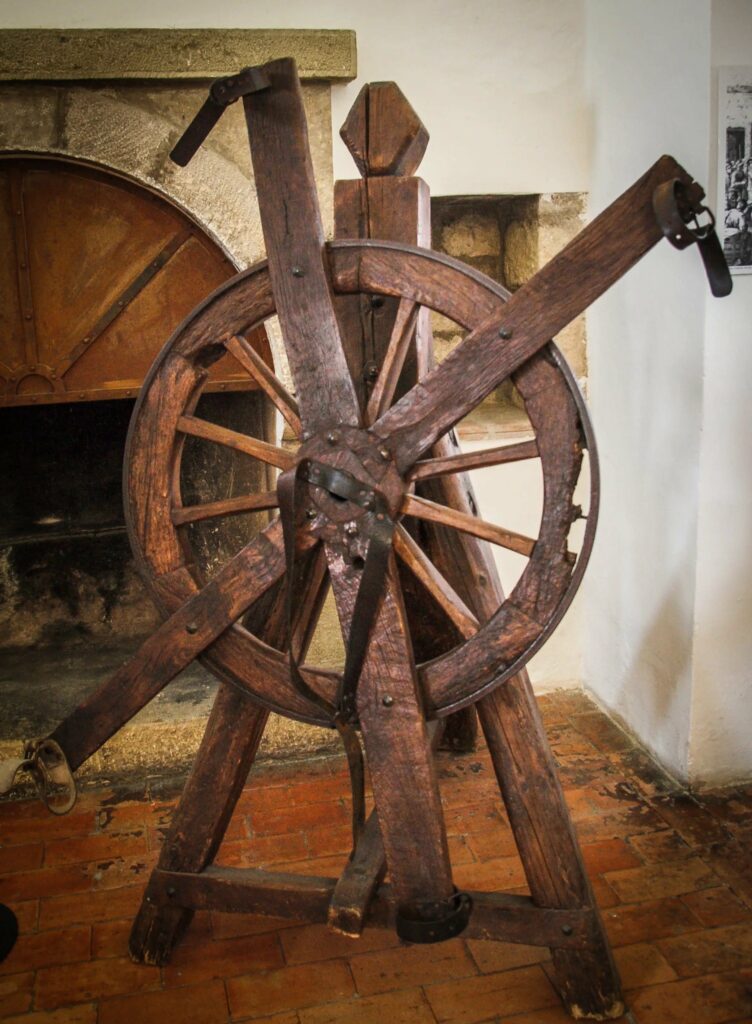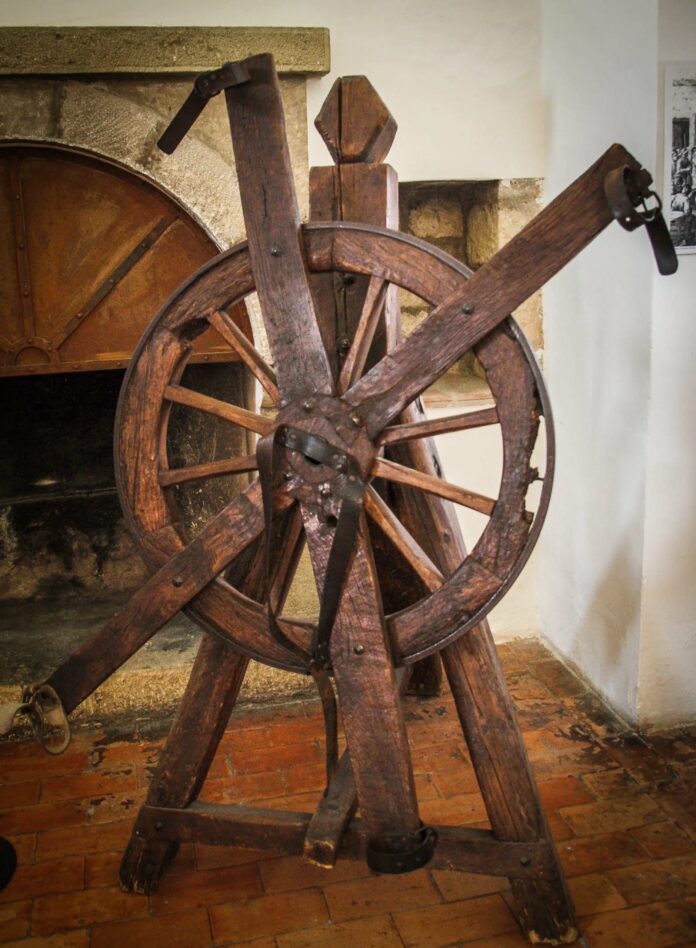The Evolution of a Barbaric Execution Method

In the annals of human history, few execution methods have been as brutal and terrifying as the breaking wheel. Also known as the Catherine wheel, this device was designed to inflict maximum pain and suffering on its victims, often over the course of several days.
Origins in Ancient Rome
The breaking wheel’s origins can be traced back to ancient Rome, where it was used as a tool of torture during the reign of Emperor Commodus. Initially reserved for slaves and Christians, the Romans would secure the condemned to a bench and use an iron-flanged wheel to crush their bones, starting from the ankles and working upwards.

The Middle Ages: Refinement of Cruelty
As the centuries passed, the use of the breaking wheel spread across Europe and parts of Asia. By the Middle Ages, it had evolved into a complex and horrifying spectacle of public execution.
The Zurich Method
In 15th-century Zurich, a standardized methodology emerged. Victims were laid face-down on a board with the wheel placed on their backs. They would receive nine strikes – two on each limb and one on the spine. Their broken bodies were then woven through the wheel’s spokes, often while still alive, and the wheel was mounted on a pole for public display.

The French Variation
In France, executioners developed their own twisted version. Prisoners were affixed to the outer perimeter of the wheel, which was then rotated as they were struck with a cudgel. The number of blows was determined by the court, with the final, fatal blow known as the “coup de grâce” or “blow of mercy.”

Notorious Cases

The breaking wheel was often reserved for the worst criminals. One such case was that of Peter Niers, a German serial killer convicted of 544 murders in 1581. His punishment was particularly severe, lasting two days and involving 42 blows before he was finally quartered alive.
The Wheel’s Final Years
Despite its barbarity, the breaking wheel persisted as an execution method well into the 19th century. One of its most infamous uses occurred in 1720 Paris, when Count Antoine de Horn and his companion were executed for murder, despite pleas from nobility for clemency.
The End of an Era
The last recorded use of the breaking wheel in France was in 1788, though it continued to be used in other parts of Europe and South America for several more decades. Today, this gruesome method of execution is thankfully consigned to the pages of history.
A Grim Legacy

The breaking wheel stands as a stark reminder of humanity’s capacity for cruelty in the name of justice. Its legacy serves as a somber warning about the dangers of unchecked power and the importance of humane treatment, even for those condemned by society.

